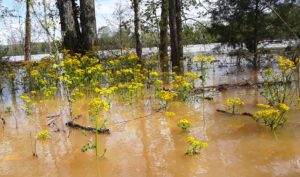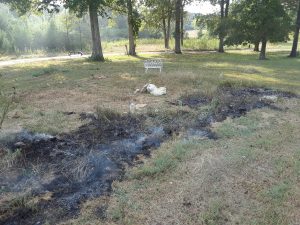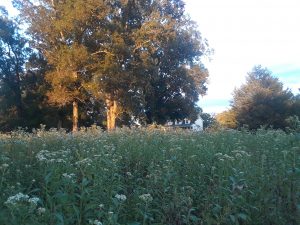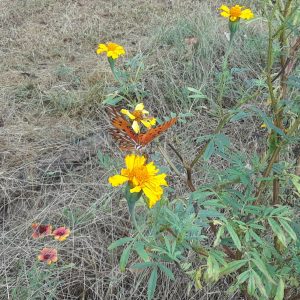I posted this piece on Wildflowers and Pollinators in the “Pollinator Friendly Yards” Facebook page. After only 4 days, I had dozens of comments and over 1500 likes! Obviously I hit a nerve; many people said that my post and what I was doing gave them hope. Most importantly, it shows that changing your lawn for wildflowers and pollinators doesn’t have to be a huge project.
Hopeful Wildflowers And Pollinators Planting Wisdom
I hope what I say here on Facebook gives people hope. In August, 2017, I moved into a home on 7 acres near the Chickamauga Battlefield in Northwest Georgia. Within a few weeks of moving in, I was stunned at the LACK of birds, butterflies, bees, dragonflies and other pollinators. It was noticeably quiet.
The property is surrounded by fields and woods, including the 5600 acre Chickamauga National Military Park, so I couldn’t quite figure out why there was such a silent autumn.
Turns out I was also surrounded by a sod farm. Nice people, but they do A LOT of spraying. A one-time beekeeper near me said: “I stopped trying to keep hives because they’d all die after the fields near here were sprayed.”
Nevertheless, I did what I could in my own hilltop yard. I let the lawn go wild, I ripped up some of it, I burned more of it (trying to mimic a prairie wildfire,) I didn’t cut down the crownbeard and other wildflowers as the bank / real estate company had. Instead, I trimmed the invasive and non-native privet back and created huge brushpiles with it and other branches. I planted mints, wildflowers, and an organic garden. I dug up a square of lawn here, a round spot there, and planted native wildflowers. Not all at once, just a little at a time. I convinced my wife that it was okay to rip up the lawn and let it grow wild, and to not mow every other week like the neighbors do. You get the idea. (My wife was surprised when all the poppies sprung up in our yard.)
Wildflowers and Pollinators Return
Two years later my property has TONS of birds of all shapes and sizes. Hummingbirds buzz around constantly, coming right up to us as we sit on our front porch. The frogs are croaking and singing like crazy. I’m seeing A LOT of butterflies and moths, there have been several types of dragonflies, AND probably 3-4 different types of wasps. From May to August more and more fireflies flicker every evening … probably 90% more than when I first moved here. I haven’t seen many bees around (but I have seen some!) so I still have hope.
My point is that nature is resilient. It only takes a little work, a spot here, a point there, and the birds and bugs will notice the welcome mat you’re throwing out for them, and come flocking and swarming to your yard!
I appreciate the Pollinator Friendly Yards Facebook group — y’all inspire me! (As requested, I added more photos) — the one with the house is a field of white crownbeard — can you spot the orange butterfly?)



